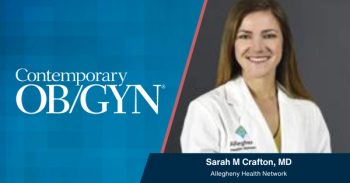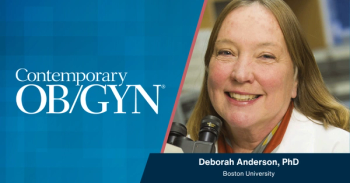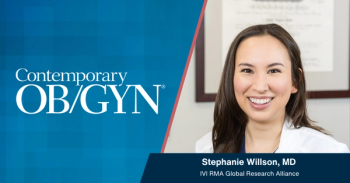
Obstetric ultrasound of pregnancies less than 10 weeks gestational duration is an essential skill for the obstetric provider and has unique considerations.

Obstetric ultrasound of pregnancies less than 10 weeks gestational duration is an essential skill for the obstetric provider and has unique considerations.

A study found increased odds of pregnancy-related homicide in states with increased rates of firearm ownership.

Michael Warren, MD, MPH, FAAP, outlines how expanding maternity care deserts and rising chronic disease rates are driving poor maternal outcome.

Sarah M. Crafton, MD, discusses how a new investigational robotic platform is expanding minimally invasive options and improving outcomes for patients.

Research found only modest neonatal outcome differences between general and neuraxial anesthesia during cesarean delivery.

Michael Warren, MD, MPH, FAAP, explains the nation’s stagnant preterm birth rate and widening disparities highlighted in the 2025 report.

A study found that general anesthesia during c-section is both safe and effective, challenging long-held concerns about newborn health.

A review found no causal link between prenatal acetaminophen exposure and offspring neurodevelopmental disorders.

Review some of the top stories from the Contemporary OB/GYN website over the past week and catch up on anything you may have missed.

Deborah Anderson, PhD, highlights the need for improved contraception access, education, and research support worldwide.

Study finds trouble sleeping, sleep apnea, and short or long sleep duration are linked to higher odds of hypertension in postmenopausal women.

Survey reveals nearly 40% of women feel misdiagnosed during perimenopause, highlighting critical gaps in women's health care and treatment approaches.

Jessica Golbus, MD, discusses the benefits of cardiac rehabilitation and innovative solutions to improve access and engagement.

Survey reveals limited allergy referrals in pregnancy due to lack of guidance and long wait times, highlighting need for better education.

A study found that women with endometriosis exhibit reduced blood pressure responses to stress.

Jun Wang, PhD, and Rajesh Miranda, PhD, outline why prevention alone is insufficient and emphasize the need for early diagnosis for children affected by prenatal alcohol exposure.

Higher waist-to-hip ratio was linked to poorer cognitive performance in early postmenopause, though it did not alter hormone therapy effects.

Drawing on work by Rajesh Miranda, PhD, and Jun Wang, PhD, new evidence shows that prenatal alcohol exposure alters cognitive flexibility.

A study found widespread disparities in contraceptive access, adverse effect burdens, and limited male-focused options.

Nonmosaic segmental aneuploid embryos show reduced yet real reproductive potential, offering new guidance for PGT interpretation and patient counseling.

FDA updates labeling for menopausal hormone therapy, removing broad boxed warnings and adding guidance for younger symptomatic patients.

A phenotype linking hypertensive disorders of pregnancy with preterm birth and large-for-gestational-age infants may reshape understanding of maternal cardiovascular risk.

Evidence shows that women experience lower referral, enrollment, and completion rates in cardiac rehabilitation programs vs men.

An international panel of women’s mental health specialists urges the DSM to recognize postpartum psychosis as a distinct condition.

New research shows criminalizing drug use in pregnancy discourages early prenatal care and may push some patients away from hospital deliveries.


Review some of the top stories from the Contemporary OB/GYN website over the past week and catch up on anything you may have missed.

New research shows that antimüllerian hormone levels may help clinicians better estimate fertility preservation and future pregnancy outcomes in women with cancer.

New research shows an increase in neurodevelopmental disorder risk among children exposed to maternal COVID-19 infection in utero.

Elisabet Stener-Victorin, PhD, explains how identifying distinct PCOS phenotypes can help clinicians tailor treatments to each patient’s needs.